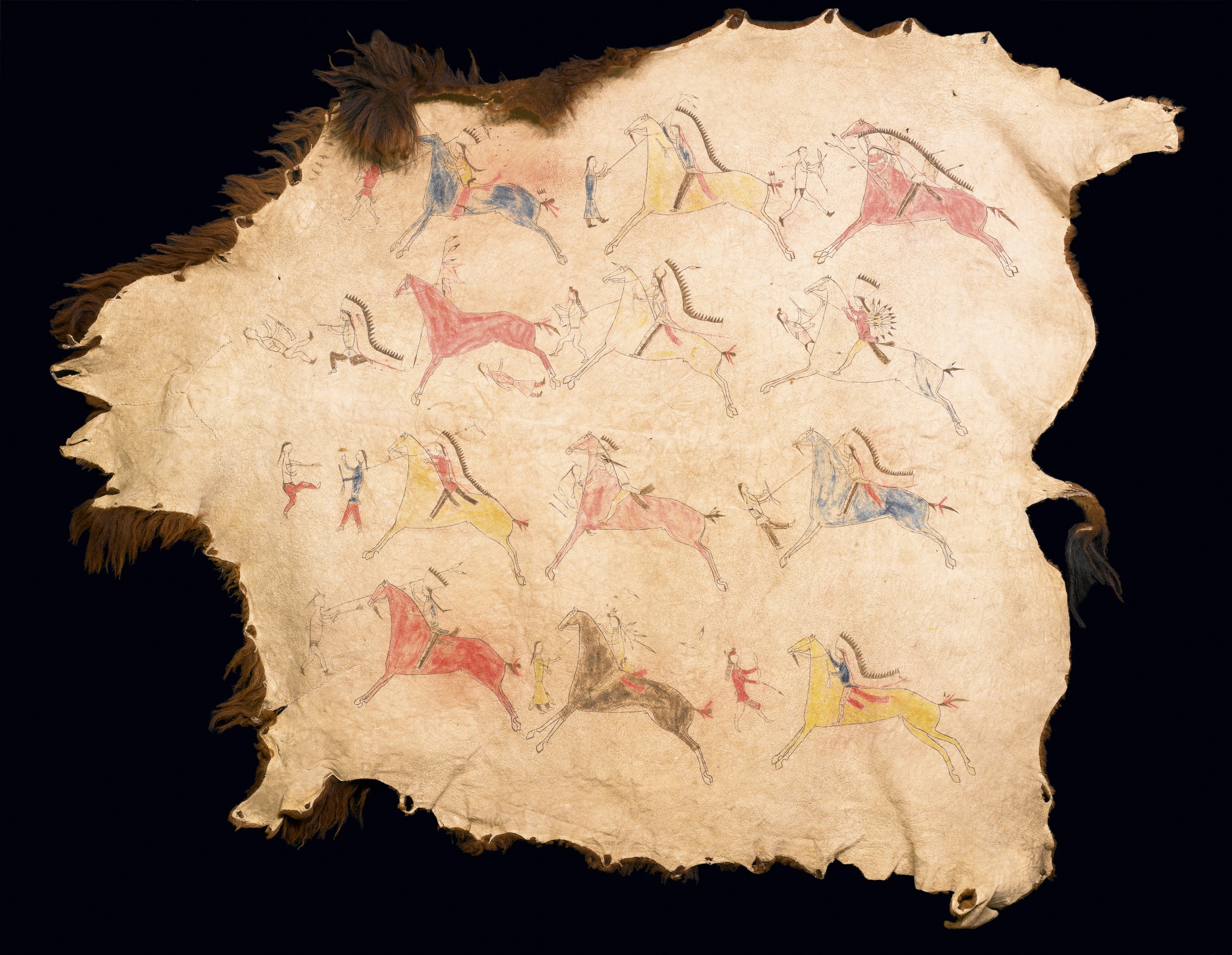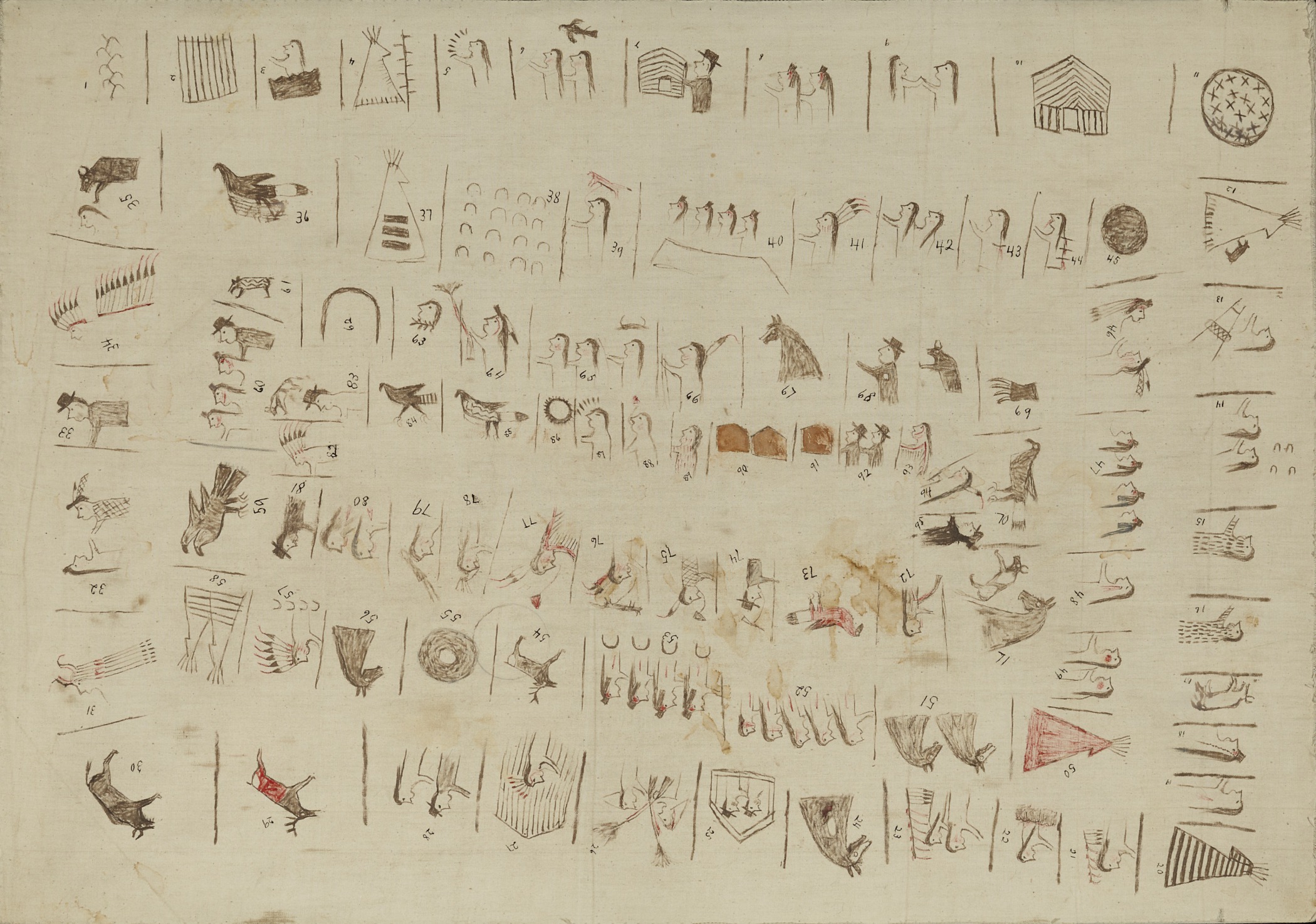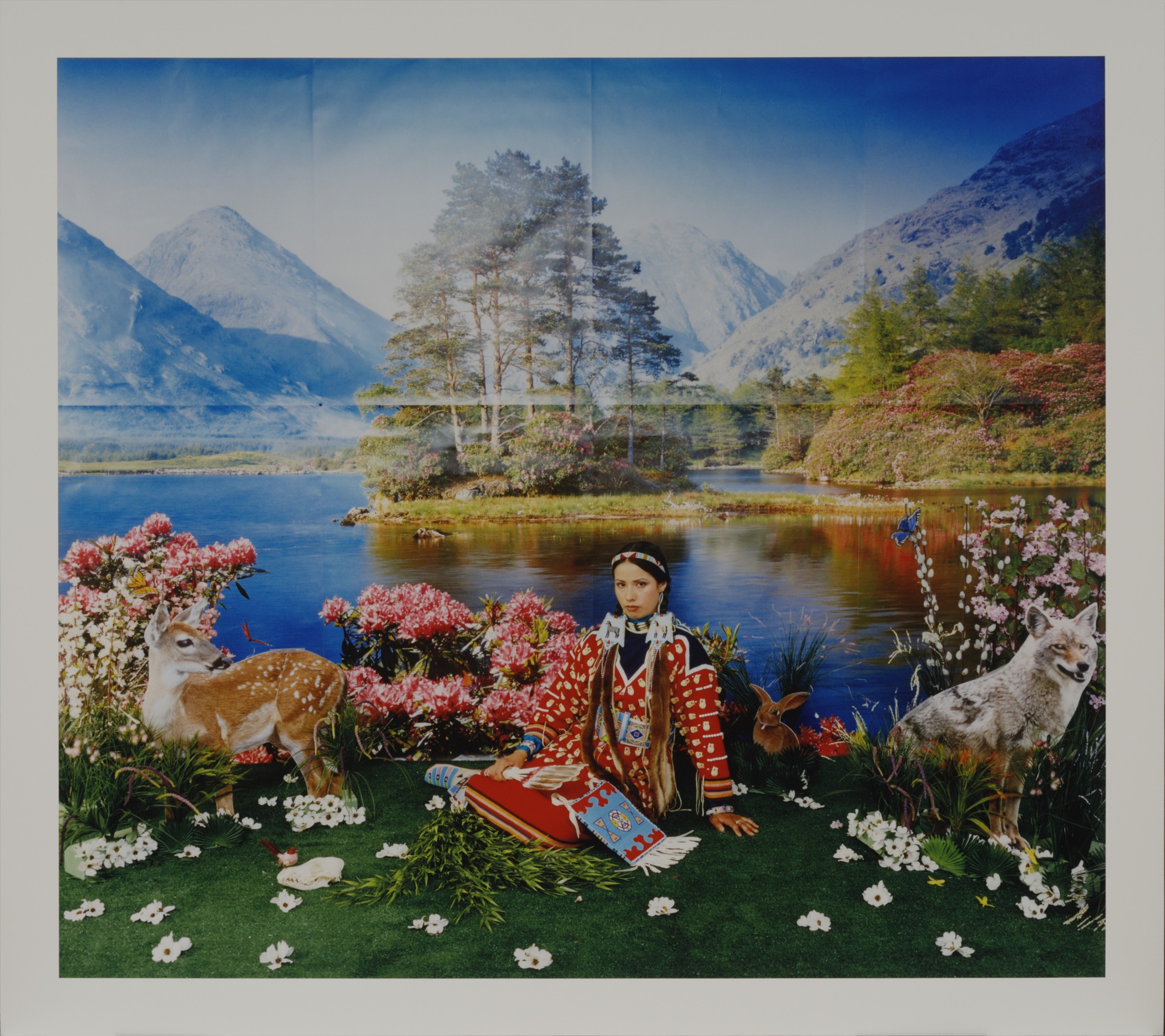Wendy Red Star, American (Apsáalooke [Crow]), born 1981
Printer: The Lab, Minneapolis
Spring, from The Four Seasons series
- Negative 2006; print July 1, 2014
- Archival pigment print on Museo silver rag on Dibond, Edition 4/15
- 35 1/2 × 40 in.
Hood Museum of Art, Dartmouth College: Purchased through the Acquisition and Preservation of Native American Art Fund; 2014.50.1-4. © Wendy Red Star
visibilityLook & DiscussWendy Red Star uses humor to address important issues like cultural stereotyping. In this work, she placed herself, dressed in Apsáalooke regalia, in four contrived settings, each representing a season of the year.
Explore the Object
Hollywood, picture postcards, Disney, and museum displays have depicted Native Americans in various romanticized or stereotyped ways. Wendy Red Star addresses this type of imagery in her work.
This series directly relates to an experience she had when living in Los Angeles. She recalls:
I was struck by the lack of natural environment in the city of Los Angeles and I was lonely for home. I decided to go searching for something familiar, so I took a trip to the Los Angeles Natural History Museum to look at the Native American section. I saw one of my Crow ancestors’ moccasins on display in a glass case. Seeing his moccasin in this encased state made the object appear very odd and misplaced. I wanted to analyze this feeling further, but couldn’t quite piece it together. I strolled by the dioramas and found in them the same cold quality as the display of my ancestor’s moccasin. I decided to construct my own version of a diorama and to convey how this format of display made me feel. (Artist statement, NY Arts Magazine)
Imagine for a moment what it would be like if a mannequin designed to look like you were placed in a museum diorama depicting an outsider’s idea of your cultural identity. What might that look like? How would that feel?
How do you think museums should address Wendy Red Star’s concerns?
Related Objects
Wendy Red Star, Summer, from The Four Seasons series, negative 2006; print July 1, 2014
Wendy Red Star, Summer, from The Four Seasons series, negative 2006; print July 1, 2014
Wendy Red Star, Winter, from The Four Seasons series, negative 2006; print July 1, 2014
Meet the artist
Wendy Red Star was raised on the Crow Indian Reservation in Montana. Her mother is Irish and her father is Crow. She also has an older sister who is Korean. Her mother, even more than her father, encouraged her and her sister to engage in Crow culture. She credits her attraction to saturated color and flamboyant patterns to her grandmother’s beadwork. She studied art at Montana State University and earned an MFA in sculpture at UCLA. She says, “A lot of my work is anti-romanticism—which usually means just telling the truth.”





